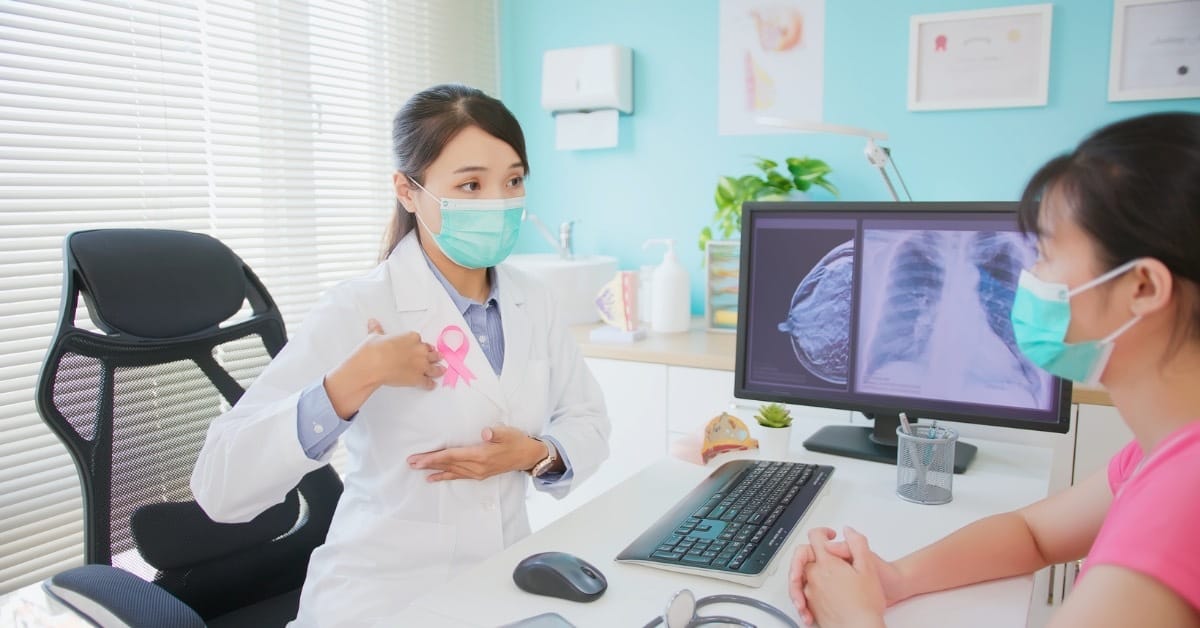- Purple Nutrition and Wellness Newsletter
- Posts
- Early Detection and Diagnosis of Breast Cancer
Early Detection and Diagnosis of Breast Cancer
The Importance of Early Detection
Early Detection and Diagnosis of Breast Cancer.

Patient consultation about Breast Cancer
Breast cancer is one of the most common forms of cancer among women worldwide. Early detection and accurate diagnosis are crucial for improving treatment outcomes and saving lives. In this article, we will explore the various screening and diagnostic techniques available, as well as the importance of breast self-examination and regular consultation with a healthcare professional.
The Importance of Early Detection:
Early detection of breast cancer can make the difference between life and death. When cancer is detected at early stages, treatment options are often more effective and less invasive. Additionally, early detection can help prevent the spread of cancer to other parts of the body, significantly improving survival rates.
Available Screening Techniques
Breast Self-Examination (BSE): Breast self-examination is a simple technique that women can perform at home to detect possible changes in their breasts. BSE is recommended to be performed once a month, ideally a few days after the menstrual period. During self-examination, any changes in the size, shape, texture, or appearance of the breasts, as well as the presence of lumps or protrusions, should be noted.
Clinical Breast Examinations: Clinical breast examinations are conducted by healthcare professionals, such as doctors or nurses. During this examination, the professional palpates the breasts and armpits for any abnormalities, such as lumps, masses, or changes in skin texture. Clinical breast examinations are recommended annually for women over 20 years of age.
Mammography: Mammography is a specialized X-ray of the breasts that can detect breast tumors that cannot be felt during a physical examination. It is recommended that women over 40 years of age undergo screening mammograms every one to two years. Mammograms can help detect breast cancer at early stages, even before symptoms develop.
Breast Ultrasound: Breast ultrasound uses sound waves to create images of the breasts and can be useful for evaluating breast changes detected during a physical examination or mammography. Breast ultrasound can be used as a complement to mammography in women with dense breasts or to evaluate abnormalities found during other examinations.
Diagnosis and Confirmation: If any abnormality is detected during self-examination, clinical examination, or mammography, additional tests may be performed to confirm the diagnosis of breast cancer. These tests may include biopsies, magnetic resonance imaging (MRI), and laboratory tests to analyze samples of breast tissue for cancerous cells.
Comprehensive Care and Quality of Life during and After Treatment:
Comprehensive care is essential for individuals diagnosed with breast cancer, as it addresses not only the medical aspects of treatment but also the emotional, nutritional, and physical needs of the patient. Here are some important areas to consider:
Emotional Support: The diagnosis and treatment of breast cancer can be emotionally challenging. It is crucial to provide emotional support to patients throughout their journey, whether through support groups, individual therapy, counseling, or online resources. Support from friends, family, and healthcare professionals can help patients cope with stress, anxiety, and depression.
Nutrition: A healthy diet is essential during and after breast cancer treatment. Patients should focus on a diet rich in fruits, vegetables, whole grains, lean proteins, and healthy fats to help maintain energy, promote healing, and strengthen the immune system. A registered dietitian can provide individualized guidance on nutrition during cancer treatment.
Physical Activity: Regular exercise can improve the quality of life for breast cancer patients by reducing fatigue, improving mood, increasing endurance, and strengthening muscles. Moderate-intensity physical activity, such as walking, swimming, yoga, or tai chi, is recommended based on the patient's capacity and preferences. It is always important to consult with the medical team before starting an exercise program during treatment.
Management of Side Effects: Many breast cancer treatments can cause side effects such as fatigue, nausea, hair loss, changes in weight, and skin problems. It is crucial for patients to work closely with their medical team to manage these side effects effectively. Medications, complementary therapies, or lifestyle changes may be prescribed to help alleviate symptoms and improve quality of life.
Rehabilitation: Rehabilitation can be beneficial for women who have been treated for breast cancer, especially those who have undergone surgery, radiotherapy, or chemotherapy. Physical therapy can help restore strength, mobility, and flexibility in the affected area, while occupational therapy can help adapt to physical and functional changes.
If you're seeking more information about breast cancer, comprehensive care during and after treatment, or advances in medical research, I encourage you to seek guidance from a healthcare professional. Personalized support can help you better understand your options and make informed decisions about your health.
Additionally, if you're interested in learning more about maintaining a healthy and balanced lifestyle, I invite you to visit my website at [https://purplenutritionandwellness.com]. There, you'll find additional resources and guidance on how to improve your overall well-being.
I hope this information has provided you with a deeper understanding of breast cancer and how to approach it holistically. Remember, I'm here to support you on your journey toward a healthier and more balanced life.
If you have further questions or need personalized guidance, don't hesitate to contact me at [[email protected]].
Jackie Velasco
Purple Nutrition and Wellness